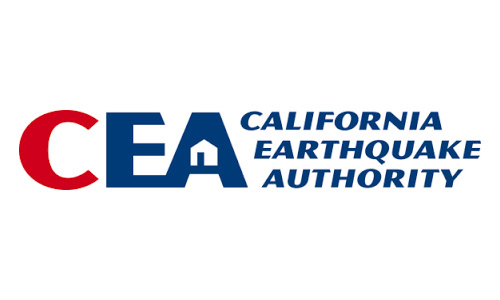Residential Earthquake
Below is a simulation, in real time, of what experts and computer models estimate the shaking intensity of “The Big One” will be like…
Homeowners Insurance is vital to protecting your long-term assets. However, your standard Homeowners, Dwelling Fire, Condo, and renters policy specifically exclude earthquake damage. You must purchase a separate earthquake policy in order to have coverage. Earthquake coverage piggybacks your current policy with similar coverage limits as your home, condo, or renters policy. This is known as a DIC or “Difference in Conditions Policy”.
Fast Accurate Quotes
Call (888)498-4495 or click the link below.
Dwelling Value
The rates for HO3 and Earthquake (Homeowners) are based in part by how much your home is currently worth. An agent may use any number of tools to assess the value of your home. They take into account your neighborhood home values, current condition of the home, market prices, quality of building materials used to build the home, and the cost to bring your damaged home up to new building code standards.
Replacement Cost
Insurance companies use various programs to calculate the cost to replace your home for a covered loss. For instance, your home may be worth $500,000 but it may only cost $135,000 to rebuild. The insurance companies use this as one of the main measures in calculating Replacement Cost.
Inflation Guard
Inflation guard will automatically increase the amount of coverage on your home with the pace of inflation. Typically 2-3% per year, however remember that the cost of your insurance will typically increase with this rider as well.
Risk Rating
Risk rating is taking into account environmental concerns that may increase the risk of a loss. This is due to the inherent catastrophic risk of a major earthquake in California. Depending on where your home is located will depend on how high the cost of Earthquake Insurance will be. For example, if you live in the San Fernando Valley of California, where the basin is an ancient sea bed (where you can get liquefaction) your risk for earthquake damage is much higher than say living on or hear the hills and mountains where your home can be on bedrock (less shaking). In any case, you can never be sure how severe the shaking will be, where or when it will occur, thats why you must always be ready with an earthquake policy.
As a friendly reminder; always have an emergency medical kit, emergency water, and a plan in place for your family if an earthquake hits. Its always good to have a safe place to connect with family as cell phones, internet, running water, electricity and most city services will be severly crippled or non existent for up to a month after a major quake. The safest thing you can do is be prepared, for more tips call one of our agents today, 888-498-4495.
Frequently Asked Questions About Earthquakes:
What causes an earthquake?
Earthquakes occur when the two sides of a fault slip suddenly against each other. The Pacific and North American plates move past each other about 1.5 inches a year. The friction between the plates causes stress, which is released when the blocks of crust slip suddenly along a fault plane. That releases waves of energy that travel through the ground, causing the shaking you feel.
What is a fault?
A fault is a fracture in the crust along which one side has moved relative to the other side. Faults can be very small or hundreds of miles long. The earth’s crust is composed of huge plates that are in slow but nearly constant motion. Part of California is on the Pacific Plate, and part is on the North American Plate. The San Andreas Fault, which runs from the Salton Sea in Imperial County to Cape Mendocino in Humboldt County, is the boundary between these plates. Sometimes one block of the crust moves up while the other moves down, sometimes they move horizontally in opposite directions (that’s what’s happening with the San Andreas Fault; Los Angeles is creeping closer to San Francisco). Some faults are well known and easy to spot, such as the San Andreas. Others are underground, with nothing on the surface revealing their presence (a blind thrust fault). The 1994 Northridge earthquake was caused by a blind thrust fault.
How common are faults in California?
There are hundreds of identified faults in California; about 200 are considered potentially hazardous based on their slip rates in recent geological time (the last 10,000 years). More than 70 percent of the state’s population resides within 30 miles of a fault where high ground shaking could occur in the next 50 years.
Does California have more and bigger earthquakes than anyplace else?
Actually, Alaska has more earthquakes and the biggest ones in the U.S. The largest earthquake in history occurred in Chile (a magnitude 9.5 on May 22, 1960). The biggest earthquake in the contiguous 48 states was the magnitude 7.9 Ft. Tejon quake on Jan. 9, 1857.
What is an epicenter?
Earthquake ruptures usually begin far under the surface of the Earth. The point of origin miles down is called the hypocenter. The epicenter is the point on the surface directly above the hypocenter.
How often do earthquakes happen?
The National Earthquake Information Center (U.S.) reports 12,000-14,000 earthquakes a year around the world, or 35 a day. Throughout the world, there are one “great” (magnitude 8.0 or more), 18 “major” (7.0-7.9), 120 “large” (6.0-6.9) and 1,000 “moderate” (5.0-5.9) earthquakes in an average year. Each year, California generally gets two or three earthquakes large enough to cause moderate damage to structures (magnitude 5.5 and higher).
What is a tsunami?
Sometimes called seismic sea waves (or, incorrectly, tidal waves), a tsunami is a series of waves generated by large earthquakes that create vertical movement on the ocean floor. Tsunamis can reach more than 50 feet in height, move inland several hundred feet and threaten life and property. Often, the first wave of a tsunami is not the largest. Tsunamis can occur on all coastal regions of the world, but are most common along margins of the Pacific Ocean. Tsunamis can travel from one side of the Pacific to the other in a day, at a velocity of 600 miles an hour in deep water. A locally generated tsunami may reach the shore within minutes.
Can earthquakes be prevented?
While there’s no way to stop an earthquake, there are ways to build safer buildings and structures and otherwise be prepared for them. Building codes in California are updated often as new information comes in. While earthquakes are a deadly threat, there have been few earthquake-related deaths in California relative to places with less stringent codes or enforcement, such as Turkey and China.
How are earthquakes recorded?
There is a network of monitoring devices called accelerographs throughout California and in other parts of the country and world. Ground movement is measured at the site of each seismic station. An earthquake releases energy that moves from the hypocenter in waves and causes vibrations. The location and magnitude of the earthquake are determined from the seismic recordings.
How are earthquakes measured?
There are several ways to measure an earthquake, but the most common is magnitude. Scientists no longer use the original Richter scale, but an updated version. Earthquakes should be referred to as “magnitude X” rather than “an X on the Richter scale.” A magnitude 6.0 earthquake releases 32 times more energy than a magnitude 5.0 and nearly 1,000 times more energy than a 4.0. But that doesn’t mean the ground shakes a thousand times harder in a 6.0 than a 4.0, because the energy is released over a much larger area.
How much power does an earthquake pack?
A magnitude 6.0 quake releases approximately as much energy as 6,270 tons of TNT, an M 7.0 199,000 tons, an M 8.0 6.27 million tons and a M 9.0 99 million tons. Of course, all that energy is not focused in one particular spot, but spreads out in waves.
What factors influence what you feel in an earthquake?
There are three major factors: magnitude, your distance from the fault, and local soil conditions. Magnitude is discussed above. As for distance, the seismic waves that cause the shaking become less intense farther from the fault. Certain soil conditions amplify the shaking; generally, the looser the soil, the greater the amplification. Although most of San Francisco escaped serious damage in Loma Prieta, those with unconsolidated landfill or soft soils (such as the Marina District) suffered serious damage. The ground motion in such areas was 10 times stronger than at neighboring sites on rock.Sources: California Geological Survey/California Geology, USGS, Arkansas Center for Earthquake Education and Technology Transfer, Governor’s Office of Emergency Services, Federal Emergency Management Agency, National Science Foundation, Southern California Earthquake Center, American Red Cross, Center for Earthquake Research and Information/University of Memphis.








